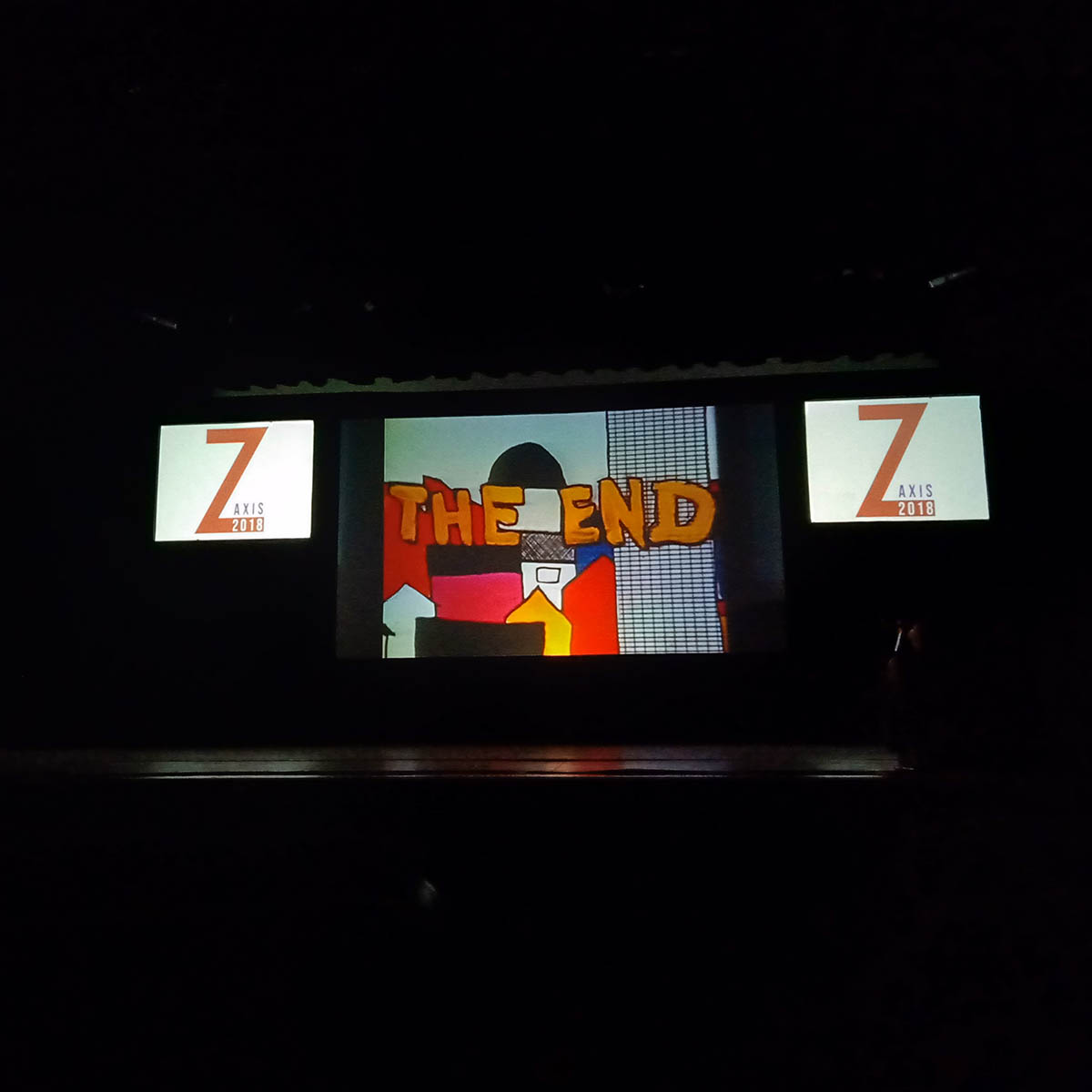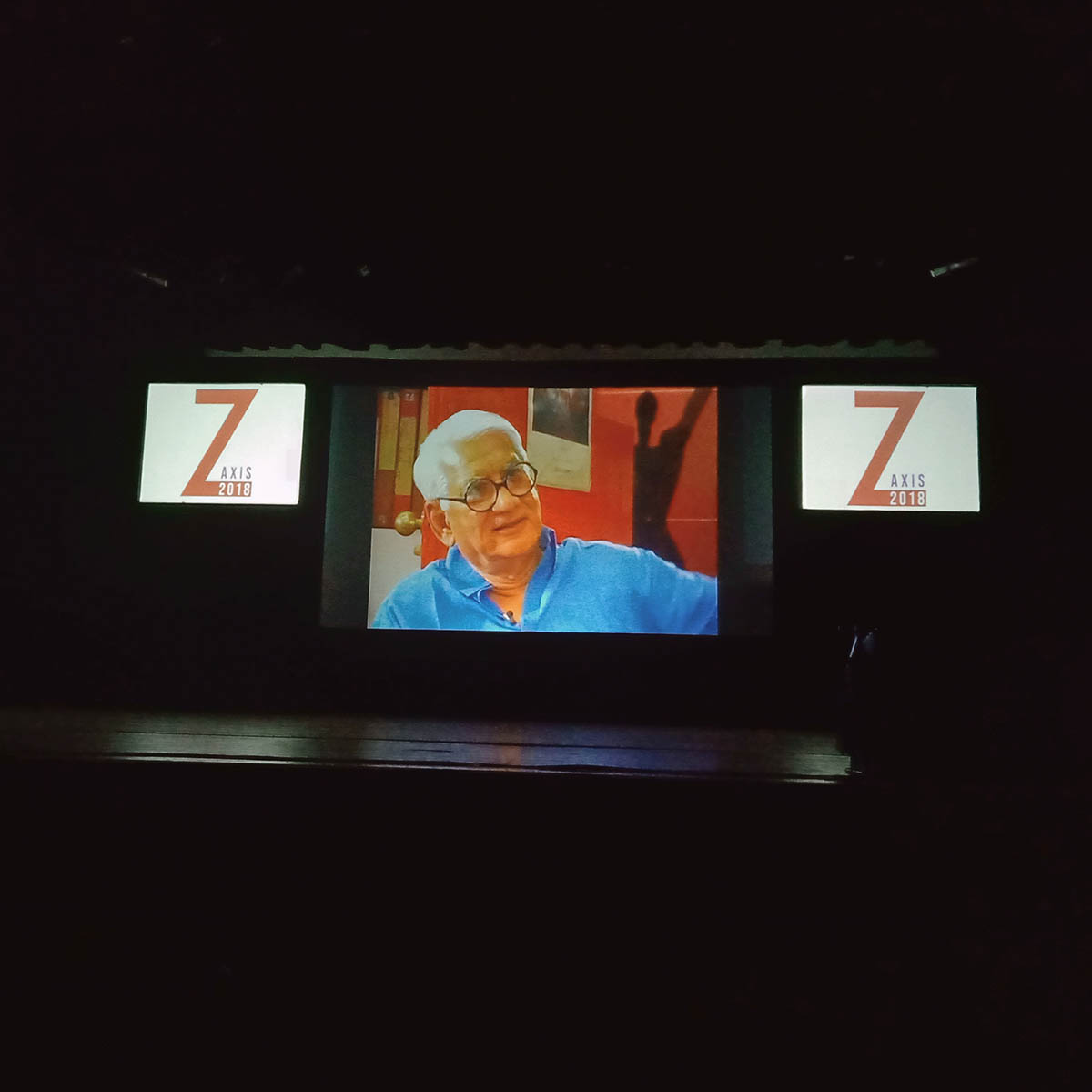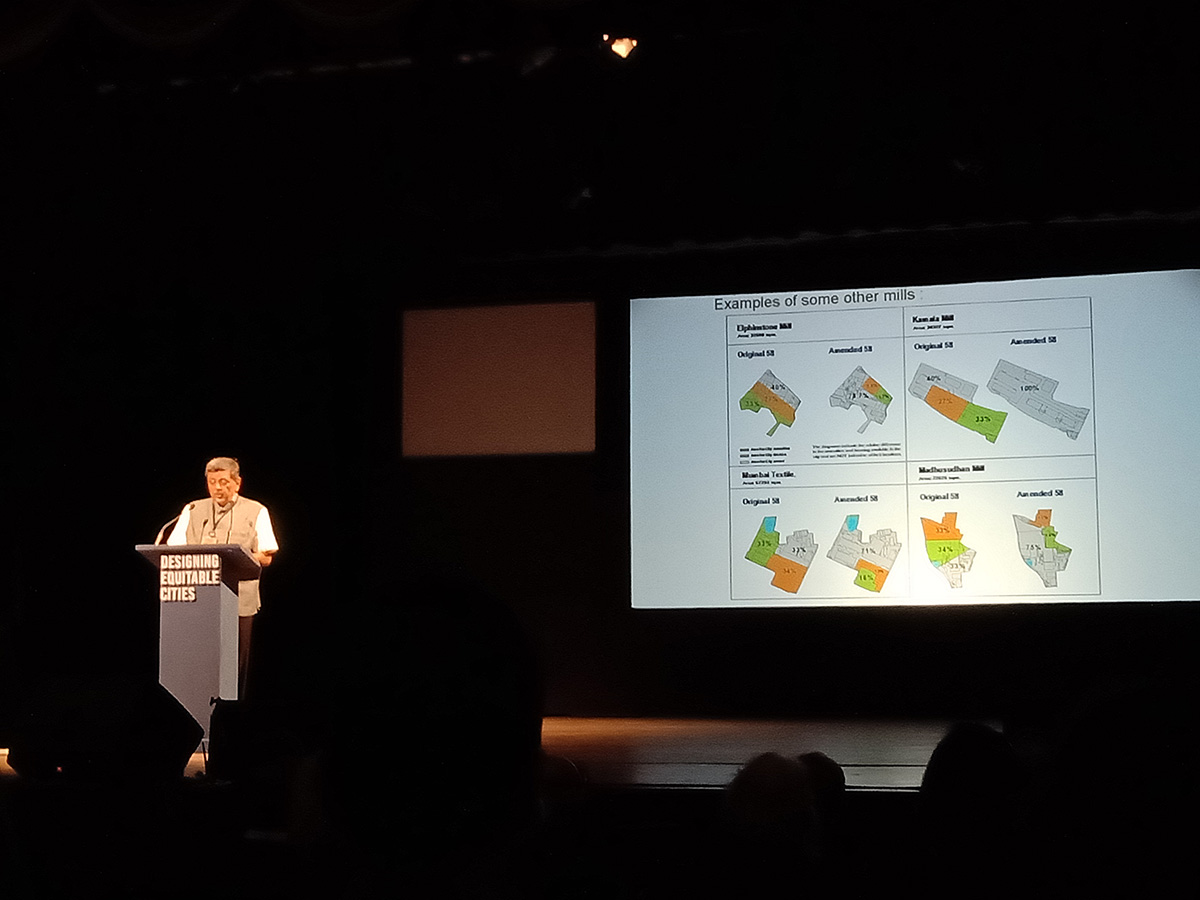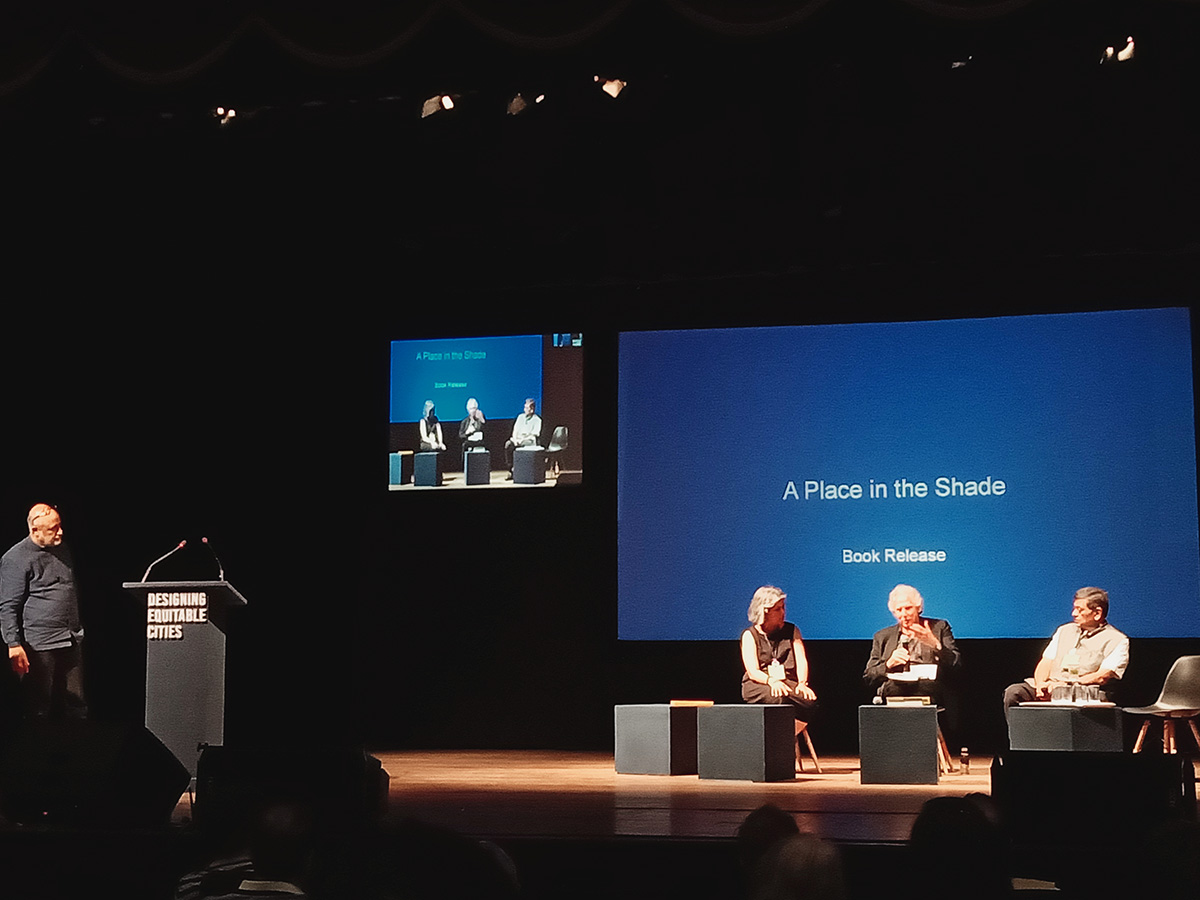Submitted by Tarun Bhasin
Day 1 Summary on Z-Axis 2018 Conference in India
India Architecture News - Sep 06, 2018 - 21:15 16006 views

The Charles Correa Foundation at Panaji, Goa in India is currently hosting the 3rd Edition of its biannual conference Z-Axis at Kala Academy, Panaji. The three-day conference being held from September 6-8 and is witnessing participation from practitioners and students of architecture and planning from across India.
Titled "Designing Equitable Cities", the conference aims to shed light on the role of the agency of architecture and planning in the design of cities that are more equitable and inclusive and hence, more resilient. The presentations and examples have been curated to find academic value and professional relevance, and provide for comparison in the Indian scenario.

The proceedings for Z-Axis 2018 began at 12 Noon with the opening of registration desks. All attendees were given the conference kit and guided to the auditoriums. The opening day of Z-Axis 2018 had a lot to offer. The day began with the screening of three movies - 'You and Your Neighbourhood', 'Volume Zero', and 'City on the Water'. All three films were either made by Charles Correa or were on his life/works.
The first film 'You and Your Neighbourhood' was a short animation that was a construction of many overlapping hand-drawn sketches. The story narrated a tale of rehabilitation of a decrepit neighborhood and detailed instances and conversations that are a crucial part of any project that involves community participation centered around its protagonist, the average Joe.
Any neighbourhood there are people who leave in search of a better life and there are people who stay and conserve the memory of the place. The protagonist, Joe, is shown to have a fulfilling childhood once he was small and the neighborhood was relatively simpler and livelier. With the incursion of an industrial factory and railway line, although the economy in the area proliferates, the neighborhood eventually due to pollution and induced apathy, falls into a state of decay.

The animation through the observations and critique of Joe voiced that the process of decay could be identified through basic elements of an individual house such as broken stairs, cracked walls, and leaking pipes; and certain public elements such as movement, waste disposal, disaster management etc. The narration took the audience through conversations encompassing each of these issues where it was made clear that interventions based on the scale of a single house were not enough to bring results, but the same physical interventions, when applied to multiple dwellings, could reverse the cycle of decay.
What could not be achieved through physical interventions, such as waste disposal, was executed by sheer planning and political will, time management and coordination with the city department. The short film was effective in teaching the audience, how an ordinary Joe can be the element of resilience in a place, to realize individual aspirations and bring revival to the life of a community.

The second film 'Volume Zero' is based on the life and works of Charles Correa. The film is not just a documentation of his body of work, but a deeper insight into key moments of his life and mind. Putting him across as one of the most important and influential contemporary architects of India, the film recounts through various anecdotes and conversations with Charles Correa, his ideas. From the narration of his childhood to the explanation of his understanding of ideas purported by Nehru, Gandhi and Le Corbusier; and his inspirations from the dockyards and massive ships and all other engineering marvels that influenced the modernists; right to deciphering ancient cosmographs, mandalas and the axis mundi; and also issues of cities, their economy, society, transportation, housing etc.
The film was a lengthy compilation of all his efforts and wide range of thinking in totality. Touching his monumental projects the film states Correa's structures as 'a mix of covered and open spaces creating a feeling of lightness; with their most important element, the pathway, used in different ways yet imitative of movement through Indian villages.' The film marks Correa's buildings as a palimpsest of the culture of the place, where, the landscape is not merely ornamental but is a manifestation of the larger realities and ideas taking place on a cosmic scale. The film hails his use of materials, courtyards, and atriums as exemplary of mastery of light, form, social aspirations and his own concepts of non-buildings.

This was followed by a detailed insight into his understanding of urbanity and especially on his work done for the betterment of Mumbai, through the film 'City on the Water'. The film documented the history of Mumbai, the growth of its economy and daily life of its workers, to lead the audience to the current problems of the city that create inhospitable conditions for the poor and the destitute. It establishes the identity of the city through the lens of its formal economy, stating that it is perhaps, the poor that make the city resilient by subsidizing it and building its ethos.
Describing the seminal essays published by Charles Correa, Shirish Patel and Praveena Mehta, that augmented the E-W trajectory instead of N-S trajectory in Mumbai, to connect the city to the mainland across the harbor and paving the way to the idea of Navi Mumbai - the film is a focused representation of the system's thinking that exists in cities about how labor, resources, and capital, operate in different circuits and later switch into built environment, with successive folding from a village to a town and then to a city, with implosions in environment and equity that although create a complexity that is fulfilling to witness, but ultimately create an irreversible condition that is much worse.

While the three movies vaguely delineated that the conference will include deliberations on methodologies of intervention in public space, building ideas, and city systems; the exhibition 'Living Ideals: Housing by Charles Correa' curated by Prof. Dirk van Gameren and Ar. Rohan Varma, shed light on the importance of housing and gave the audience a chance to revisit some notable housing projects from the CCF archives. The exhibition was situated a few kilometers away from the Kala Academy, within the natural domain of selected works - the office of the architect, the Charles Correa Foundation office in Fountainhas - thereby, adding to a certain sense of nostalgia. The relevance of incrementality, ownership, community participation, economy, and the relationship of dwelling and community to the ground were the key elements discussion in Living Ideals, highlighted through the projects.
"Housing design is not about bringing a new concept everytime, but about developing and testing, which is perhaps the best part about Charles Correa's work," said Prof. Dirk van Gameren while addressing the audience, and then pointing out to the model of Belapur Housing, he exclaimed, "The notable thing is that the architecture allows the community to change its form over time. We revisited these places from the archives and found the residents to be happier, to be having a better quality of life. Thus, we decided to show them to a larger audience." The exhibition was able to encompass all scientific and metaphysical underpinnings of Correa's designs which were then given direction by the opening address by Nondita Correa Mehrotra, back at Kala Academy.

The short opening remarks by Nondita Correa Mehrotra revealed the intent behind Z-Axis, works of the Charles Correa Foundation and the mentioned theme of the conference. Pointing out the stark inequality and lack of spatial justice in Indian cities, she questioned the identity of the city - "What is a city? Who is it for?" - two very powerful questions to kickstart the deliberations. She paved the direction of the conference and gave a hint about the nature of upcoming presentations through one of her ending statements - "In cities, equity goes beyond economy to encompass memory, space, and shelter. The more equitable our cities, the more equitable and diverse will be our population and culture." Following this was a powerful presentation by former Justice Gautam Patel, titled 'A City Betrayed'. Layered with personal insights, sharp statements, and skepticism, the lecture was a reflection on Charles Correa's vision for the Mumbai Mills equitable distribution between mill owners, affordable housing and open space.
Revealing how Charles Correa's designs planned to use the mill landscape to increase open space, public amenities, and affordable housing in the city without reducing the floor space of private landowners; Gautam Patel explained how the present planning and policy in place for redevelopment of the Mumbai Mill landscape is detrimental for the overall health of functioning of the city as it reduces the amount of space for poor. "Why is a gated community with all amenities of a non-rural life, not a city? Why is urban spatial justice tied to having wealth?" His questions were a testament of a lost struggle and decline of civic governance in India, where private practitioners are forced to give up autonomy in hopes to give light to their ideas for a better built environment. "When questioning the interests of the city, the interest of landowners must not trump public need," warned Gautam Patel, detailing how sharing of assets among unknown and amorphous population is a crucial aspect of urban design; and ended the lecture with a witty anecdote - "Private toilets of rich and public toilets of poor drain into the same sewers!."

Lessons from the struggle narrated by Gautam Patel, raised concerns and the Charles Correa Memorial Lecture delivered by Prof. Richard Burdett saw to point out key problems in Indian city systems that lead to the collapse of past noble visions. "The tensions b/w the person-in-charge and the voice of people is at the heart of the story of the development of a city, which is a problem in Indian cities. You can't make equitable cities if mayors don't agree and jurisdiction, issues of land and power do not line up that is not even a problem of design." The memorial lecture delved into studies and patterns of urban growth and trends from 1950 to 2050, with a focus on conditions in Global South contained by primary issues of low energy, and poverty. Stating that the future growth was centered in South-East and South Asian cities and the African continent, the lecture also shed light on the professor's book 'Shaping Cities' the revealed studies and stories of approach, political will, desire and physical interventions required to create genuinely resilient cities open to change.
The lecture was focused on the efforts that went into making the planning and policy of London Olympics a success model for creating bids for social, economic and environmental regeneration to break trends represented in RED in the 'multiple deprivation index'. 'London's vision for a better future is contained within the boundaries defined by the green belt, allowing for development in vacant local lands with an emphasis on deprived areas.'

Using the London Olympics and many more case studies as an example, the Memorial Lecture for Z-Axis 2018 delivered by Prof. Charles Burdett, encompassed many forms through which physical environment can be shaped to exacerbate exclusion and facilitate inclusion, successfully setting a precedent for many issues that will be encountered in Day 2 and 3.
The lecture was followed by an interesting Q&A session with the audience moderated by Ar. Rahul Mehrotra, followed by the relaunch of the book 'A Place in the Shade' that marked the end of Day 1.
All images © Tarun Bhasin
